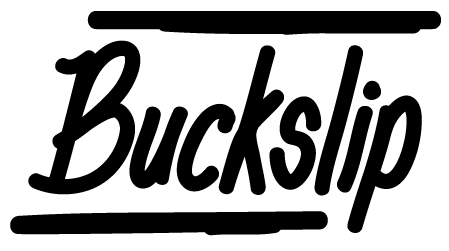A Dumb BS Survey for You
The other day I found myself in a particularly productive and joyous headspace listening to John Carpenter’s new Lost Themes III. It was the way the sounds, instantly, whatever it is they’re doing below the surface, conjured a movie that had never existed in my head. It could have been any John Carpenter movie, but point was it was mine. As Khareem Ghezawi writes in this review of the album, that’s its magic: “whatever there is out there, it’s yours and yours alone to find.”
So anyway, we got it in our head that this might be a fun thing to ask our readers - what’s the movie you see in your head when you listen? So we made a dumb single question survey to ask you just that. If we get some responses, we’ll share them! If we don’t, we won’t, and we’ll just keep watching the movies in our own heads.
Hope you’re good. We are. No impeachment news here, we promise.
– Patrick
ps. Thanks to those who spotted my dumb slip last issue of calling Patricia Lockwood Patrick. It was, I think, just the wish that I were her. Sorry, Patricia!
Things
“If it wasn’t for the dust, our universe would be a pretty mundane place: flickering stars with nothing around them.”
“Plastiglomerates, surveillance robot dogs, fordite, artificial grass, antenna trees, Sars-Covid-2, decapitated mountains, drone-fighting eagles, standardised bananas”—A Bestiary of the Anthropocene by BS friend Nicolas Nova and colleagues. A taxonomy of the hybrid beasts we are fated to live amongst.
“Every place had a different blue, every blue had a different name,” Esther Kinsky writes early on in Grove, a book which—amongst the many beautiful details hidden in its initially confounding fragments—expresses the nuance and history of blue with the precision of a Renaissance painter, who probably would have had to grind precious lapis lazuli extracted by forced child labour in the mines of northern Afghanistan to achieve the vibrant tones in their masterworks. This article from the Times this week, about the first inorganic blue pigment in two centuries, brought our minds back to Kinsky, and to the meaning of the word “ultramarine”, and so we thought we’d perhaps we’d send you there too.
We have this nagging feeling that somewhere inside this history of the evolving and mutating life of the Weird Garfield meme universe—from Lasagna Cat to Garfielf to the dark universe of the /r/imsorryjon subreddit—is the key to understanding probably everything in the last two decades. (Here in Toronto, our own little sad slice of Weird Garfield, the terrible Garfield-shaped-pizza restaurant that for some reason wasn’t a lasagna restaurant, closed amidst the madness last year, only for its owner—without any hint of a sense of humour—to announce a pivot to Scooby-Doo Eats (not… Scooby Snacks?). There’s a story behind that which seems dark and sad which we won’t delve into, just to say that we will miss having Garfield Eats to walk past, always slightly bewildered in new and interesting ways. We’re not going to link you to any of this, or to the Garfield Eats “series pilot” that guy just released, because we do not wish to make you as feel as empty inside as we do.)
Aye Min Thant, on the “Stupid Coup” in Myanmar: “The international community, including myself as someone who is often accused of being ‘too Western,’ has an almost religious belief in the power of cunning, rational actors. We like things to make sense in a particular way, and look at the world through the lens of powerful players angling for long term control. We tend to assume the Tatmadaw is playing by these rules, and because of this Myanmar can be absolutely confounding for those on the outside.“
I've drunk so much orange liqueur I'm out of cointreaul.
— Oblivious (@HerrOblivious) January 27, 2021
“Let’s learn about national security!” The Hong Kong Education Bureau has released an animated video, complete with instructional owl, to help pre-schoolers better understand their rights and obligations as citizens, and that through its new security law Beijing is only looking out for them. Basically, society is just like a classroom and if people are allowed to just run around doing what they want they might trip over each other and something.
From the closed domestic worlds of quarantine, Hunter Dukes with a fun, high-concept literary history of “armchair travel”—both the armchair and the travel, the comfort and cosiness and colonialism of both, much odd detail on what coiled springs did to uncoil our imagination—in the Public Domain Review. Just keep the image of “mahogany spaceships, upholstered time machines with tufted buttons” with you as you proceed through your day.
Further armchair (or wheely desk chair) travel possibilities—last issue we linked you to Sounds of the Forest, a soundmap from forests around the world. Berlin dev shop New Now turned it into a pretty little random forest teleporter for you, tree.fm. And you can work on your carbon footprint with Drive and Listen, pairing YouTube drivearound videos from cities all over the planet with streams of whatever you’d be listening to there on your car stereo. Long to be winding through the Hollywood Hills listening to Warren G and Nate Dogg on KDAY, or trying to figure out how the heck to exit the Piazza Venezia in Rome without knocking over at least four Vespa riders while listening to Italian talk radio? Have at it!
We’re huge fans here of Danielle Baskin’s many weird art projects and businesses and art projects that are businesses. She makes us long for that brief moment between millennia when culture jamming was a thing. Her latest, a website to grant blue-check verified badges to houses in San Francisco, is one of her best yet. As this great appreciation of her and the prank by Jonathon Keats in Forbes puts it: “There is enough suppressed irony in San Francisco to make a satirist cry. Instead, Baskin has surfaced a latent desire in all its grotesqueness, sending her boulder-free city into self-directed therapy.”
Rare aesthetic: pretending your life is together when it definitely is not pic.twitter.com/NuewGYzZZ1
— beca grimm (@becagrimm) February 4, 2021
Paul Ford, with an extremely Paul Ford appreciation of the geography of offices, a year or so since most of us were last in one, lamenting the little rituals of work culture lost alongside the commute: “I think of those as ‘weeping paths,’ part of the secret map of every office. You cannot sob at your desk, so you must go on a journey, smiling at the floor, until you find a place where emotion can flow. Offices have their own mental maps. ‘Oh,’ they say, ‘she’s moving to the 17th floor.’ And everyone says: the 17th floor! And you know, being a social primate, exactly where you are in the organization relative to that floor. Offices all have their formal and informal maps, whether inside a bank, statehouse, cathedral, museum, school, or open-plan tech firm. I say ‘West Wing’ and you know what I’m talking about.”
That’s offices. Also restaurants. This is good ghost kitchen content at Marker, as Adam Chandler digs into the “mishmash of mysterious, blandly-named restaurants that exist solely in DoorDash” we love to think about here all the time.
How about cities then? Jathan Sadowski at Real Life brings us back one more time to the utopian dreams of Sidewalk Labs, in an argument for some real utopian dreaming: “To some, scuttling a smart-city project may seem defensive and reactionary—a rejection of the future. But it is only a rejection of one predetermined future. At the same time, it is a positive affirmation of a world in which decisions about governance and development are not already dictated by corporations.”
Ah but who cares how we’re changing—much more interesting to read about how grizzly bears are changing and adapting their lives (our fault too, of course), migrating on their own weeping paths, with Brian Payton at Hakai.
“This whiff of insider trading presents the future as a commodity, an exercise in temporal arbitrage in which knowledge of new developments yields a financial edge. It’s no coincidence that the authors of such works have historically skewed white, male, and capitalist in mindset; many of them work as futurists, consulting in the grey area between business, government, technology, advertising, and science fiction.” In The Atlantic, Samantha Culp with a great short history of pop futurism, on the 50th anniversary of Alvin Toffler’s Future Shock.
No better way to remember Mark Fisher than with a club night. “On Instagram, snarky academic-types said the queue was ‘full of teenagers googling “who is Mark Fisher?”’ However, this look-down-the-nose attitude was exactly what we aimed to dispose of. We didn’t know who Mark Fisher was when we took his class. We simply met him, and each other, in that serendipitous way through which encounters happen. Engaging with Mark and his thoughts feels exciting. Nursing more than just a hangover, new futures for political or philosophical thought are brought into being.”
I want a billionaire to carry me in their hand like King Kong
— Chris Locke (@chrislockeworld) January 29, 2021
Of all the cartoonish monsters British colonialism deployed to the edges of its Empire, few were quite so ruinous as Clive of India. Another Atrocious Man Named Clive Or, the Ass of a Sociopath is an eye-popping recounting of that history by Matthew Gavin Frank in Guernica that does something quite furious in its margin notes. “All of the atrocious men in their too-tight khakis”, those notes make clear, are not merely a historical oddity.
From Clive to Karen but never far from colonialism’s grip, Carey Baraka in The Drift revisits the legacy of Karen Blixen—the Out of Africa Karen, the “Original Karen”—that has ossified for Kenyans into a kind of colonial nostalgia, and plays the role of a tourist visiting the suburb that now bears her name: “As a Black Kenyan man, it’s likely that if I were to walk alone in Karen, I’d be questioned and asked for identification. This is not particular to Karen; all the wealthy neighbourhoods in Nairobi are rife with physical barriers and security guards who carefully screen visitors. Before independence, an African was not allowed inside Nairobi without a permit and a kipande (a metal plate worn around the neck detailing basic personal details, fingerprints, and employment history), and in neighbourhoods like Karen, discrimination persists against those assumed not to belong.“
In the shadow of the January insurrection and the wild flameout of QAnon, a fascinating Substack post by Luke Carneal on whether particular forces are driving increased right-wing radicalization in the organic farming community, or whether’s it something endemic. “There are many reasons for a person to leave our modern society and foresee an escape into the raw countryside of their imagination,” he writes. But for a particular kind of libertarian, “they find common cause in a rejection of what they view as modernity in its entirety—creeping government intervention into the lives of individuals, incoming forced vaccinations, tyrannical mega-corporations colluding with globalist governments to keep down the small scale back-to-the-lander.” Pair with Ronan Farrow’s profile of Rachel Powell, the Pink Hat Lady.
Pair, too, with Mark Keierleber at FastCo, on how those radicalization engines are at work amongst teen gamers. As with the farmers, there are no great mysteries. It’s all happening in plain sight.
If we can’t convict Donald Trump of inciting an insurrection, I have a weird feeling cancel culture is not out of control.
— Louis Virtel (@louisvirtel) February 13, 2021
For the best part of the last decade, the Slate Star Codex website exerted a sort of gravitational pull amongst connoisseurs of a particular flavour of libertarian thinking. It was sort of the private Silicon Valley members club of the “debate me bro” community (before they had Clubhouse and their own Substacks), devoted deeply to a rationalist (or Rationalist) view of how the world worked. Anachronistically, until last summer, it was a blog, an actual blog, that still mattered, even if it was rarely right about much. Look, Slate Star Codex was interesting, even if it was overly verbose and contained the voices of almost nobody you’d want to have to put up with next to you at a bar rambling on about the singularity and Bayesian reasoning. And yes, also, toxic, and racist, sorts did gravitate towards it too. But it was a site we’d read to get a sense of how that way of thinking worked, which seemed important when it influences so much that’s being built and destroyed around us.
There was a minor drama last year when the site suddenly went offline after NYT journalist Cade Metz reached out to its founder, who flipped, not wishing to be named in the Gray Lady, despite his name being generally public knowledge. We’ll spare you that story because it’s boring, but Metz’s big piece on the site, its community, and its influence in the Valley finally came out this weekend, and as angry as it’s making a lot of people (it’s not a particularly good article, sadly, and does throw some weak-sauce character attacks at the site where deeper reflection might have yielded more fruitful and telling critique), there’s an interesting untold story between the lines about the Valley and how it works, that we’d like to see told a bit better. Problem is, as you can see on Twitter right now, advocates for “the free exchange of ideas” don’t tend to react so well to feedback being freely exchanged in their direction. Elizabeth Spiers, she of Gawker cofounding fame, has some good and fair stuff on all of that on her… Substack. We’ll let her play us out this week:
I hope that someone does a longer more comprehensive story on the Rationalist community and the site--selfishly, because I love this sort of thing. But I’d also like to see people who self-identify as Rationalists be a little more self-aware about when they are letting their emotions trample their logic--when they’re tempted to argue that questions of justice are ancillary to question of progress, and when they, for example, get angry and project all manner of emotion onto reporters whose reporting they don’t like.
But mostly, I want them to be more rigorous: to acknowledge that ideas are meaningless in a vacuum that does not include real world material conditions, and that people pursuing innovation are not the only people who matter, or even the people who matter most. And another structural reality is that organizations--companies, say, startups--are terrible at policing themselves. What journalism seeks to do is illuminate the areas where destructive means are being utilized to achieve ends that might actually be virtuous or worthy in some other way. This is useful, in the public interest, and good for the tech industry in the long term. It mitigates things that are destructive to the industry, and destructive to society.




